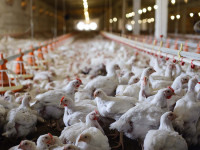Money
Handicraft Year 2021 announced to revive curio industry
The sector contributes around Rs20 billion to the national economy annually, according to the Federation of Handicraft Associations of Nepal.
Krishana Prasain
Handicraft makers and traders have announced dedicating the coming year to revitalising the industry left in tatters by the coronavirus. Lack of sales and new export orders has brought distress to the thousands of Nepalis that depend on the sector for their livelihoods.
The Federation of Handicraft Associations of Nepal said on Sunday that it was declaring next year as Handicraft Year when they would work to promote the business and lobby with the government for policy reform to make Nepali products accessible and competitive in the international market.
Speaking at the federation's 48th anniversary function, its president Surendra Bhai Shakya said that the Handicraft Year was intended to restore the industry affected by the coronavirus pandemic.
The federal, provincial and local governments should provide skill-based self-employment training and national and international market management training to protect and promote the declining handicraft industry, he said. Government offices should also use Nepali handicraft products to help the industry get back on its feet, he added.
The federation said that funding should be provided by giving priority to the clear objective of becoming self-reliant by creating self-employment.
Parbat Gurung, Minister for Communications and Information Technology, said that the government was ready to make policy reforms to promote handicrafts and make exports competitive.
The government is going to make policy reforms for the promotion of Nepali handicrafts which have been playing an important role in enlarging export trade, creating jobs and publicising Nepal's identity in the international market, he said.
Gurung urged the federation to recommend policy reforms to make exports competitive and boost the handicraft business amid the slowdown brought about by the pandemic.
Gurung added that the ministry was ready to facilitate online marketing of Nepali handicrafts.
The online marketplace, which can be an appropriate platform for handicraft products, has not been able to promote locally produced goods, according to entrepreneurs.
E-commerce has been growing steadily in Nepal, but because of lack of proper linkage between e-retailers and producers, many homemade goods produced by small and medium-sized enterprises do not find a market even though they provide a livelihood for many families.
Motilal Dugad, Minister of State for Industry, Commerce and Supplies, said that the ministry would help reduce production costs for export promotion. As the country has not been able to export handicraft products as expected, diversification of handicrafts should be emphasised by reducing production costs, he said.
Baikuntha Aryal, secretary at the Ministry of Industry, Commerce and Supplies, said that emphasis should be laid on quality products while reducing production costs. “The government can help bring down production costs, but entrepreneurs should work to produce quality products,” he said.
“Nepal has not been able to make good use of the United States concession on 77 items,” said Aryal.
This year, the association will implement the collective trademark for the material genre scheme, launch programmes to integrate interior designing with handicrafts to promote tangible and intangible art culture, provide identity cards to artists and organise art exhibitions, officials said.
The federation will also expand its footprint in all seven provinces by merging with more and more commodity federations and district federations across the country.
Other initiatives in the annual programme include urging the government to carry out timely policy modification and remove procedural hassles, operating the SAARC Handicraft Development Centre and establishing a handicraft village.
The federation also plans to implement the Handicraft Development Policy, develop the competitive concept of Made in Nepal and Make in Nepal, and make timely use of business and business networks.
According to the Federation, the handicraft industry has been directly and indirectly involved in the national economy by creating employment, earning foreign exchange through export trade and contributing around Rs20 billion to the national economy annually through exports and domestic consumption.




 12.12°C Kathmandu
12.12°C Kathmandu













%20(1).jpg&w=300&height=200)
